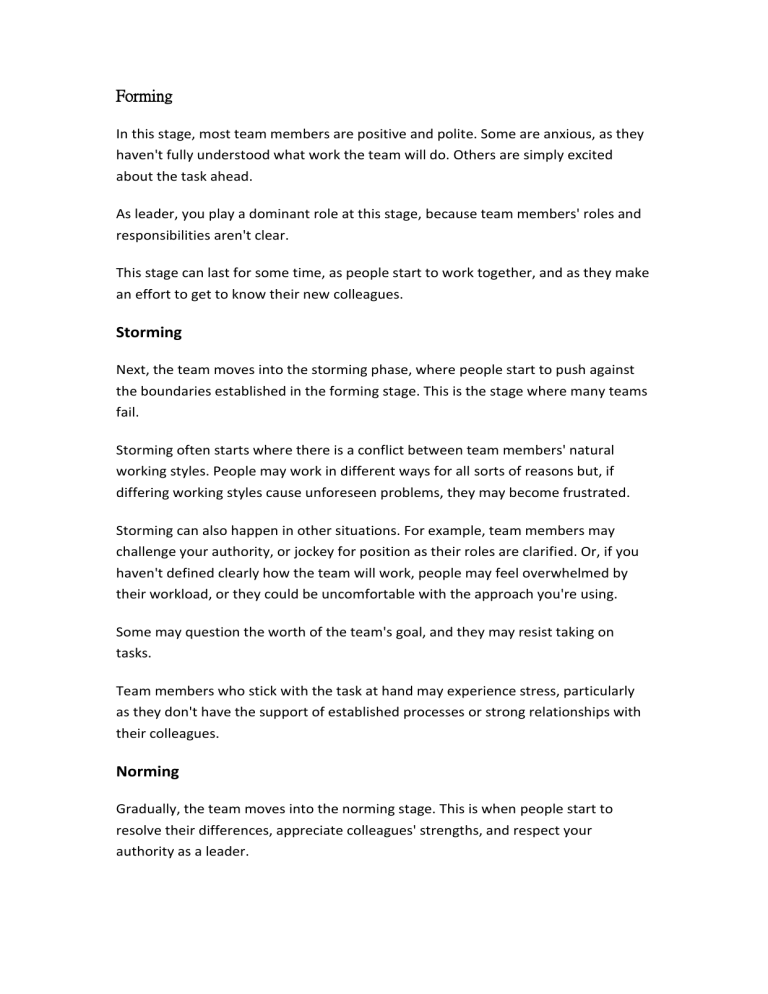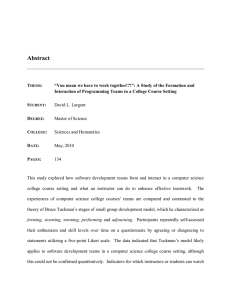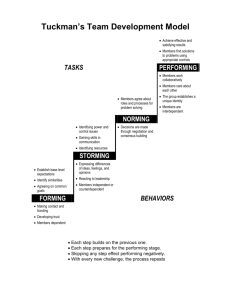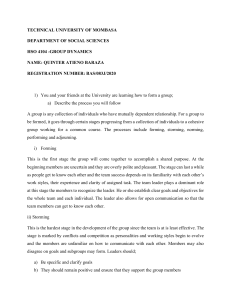
Forming In this stage, most team members are positive and polite. Some are anxious, as they haven't fully understood what work the team will do. Others are simply excited about the task ahead. As leader, you play a dominant role at this stage, because team members' roles and responsibilities aren't clear. This stage can last for some time, as people start to work together, and as they make an effort to get to know their new colleagues. Storming Next, the team moves into the storming phase, where people start to push against the boundaries established in the forming stage. This is the stage where many teams fail. Storming often starts where there is a conflict between team members' natural working styles. People may work in different ways for all sorts of reasons but, if differing working styles cause unforeseen problems, they may become frustrated. Storming can also happen in other situations. For example, team members may challenge your authority, or jockey for position as their roles are clarified. Or, if you haven't defined clearly how the team will work, people may feel overwhelmed by their workload, or they could be uncomfortable with the approach you're using. Some may question the worth of the team's goal, and they may resist taking on tasks. Team members who stick with the task at hand may experience stress, particularly as they don't have the support of established processes or strong relationships with their colleagues. Norming Gradually, the team moves into the norming stage. This is when people start to resolve their differences, appreciate colleagues' strengths, and respect your authority as a leader. Now that your team members know one another better, they may socialize together, and they are able to ask one another for help and provide constructive feedback. People develop a stronger commitment to the team goal, and you start to see good progress towards it. There is often a prolonged overlap between storming and norming, because, as new tasks come up, the team may lapse back into behavior from the storming stage. Performing The team reaches the performing stage, when hard work leads, without friction, to the achievement of the team's goal. The structures and processes that you have set up support this well. As leader, you can delegate much of your work, and you can concentrate on developing team members. It feels easy to be part of the team at this stage, and people who join or leave won't disrupt performance. Adjourning Many teams will reach this stage eventually. For example, project teams exist for only a fixed period, and even permanent teams may be disbanded through organizational restructuring. Team members who like routine, or who have developed close working relationships with colleagues, may find this stage difficult, particularly if their future now looks uncertain. As a team leader, your aim is to help your people perform well, as quickly as possible. To do this, you'll need to change your approach at each stage. Follow the steps below to ensure that you're doing the right thing at the right time: 1. Identify the stage of team development that your team is at from the descriptions above. 2. Now consider what you need to do to move towards the performing stage. Figure 1, below, will help you understand your role, and think about how you can move the team forward. 3. Schedule regular reviews of where your team is, and adjust your behavior and leadership approach appropriately. Team formation usually follows easily recognizable stages, known as "forming, storming, norming, and performing." Psychologist Bruce Tuckman, who created this memorable phrase, later added a fifth stage, "adjourning" or "mourning." You can use Tuckman's model to help your team reach the performing stage as quickly as possible. First you identify the stage of development that your team is at. Then, you use strategies that move your team through to the next stage in the team formation process. With focus and hard work, you'll quickly have a high-performing team.





